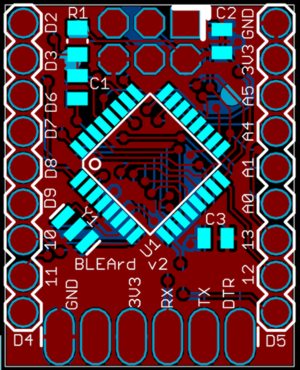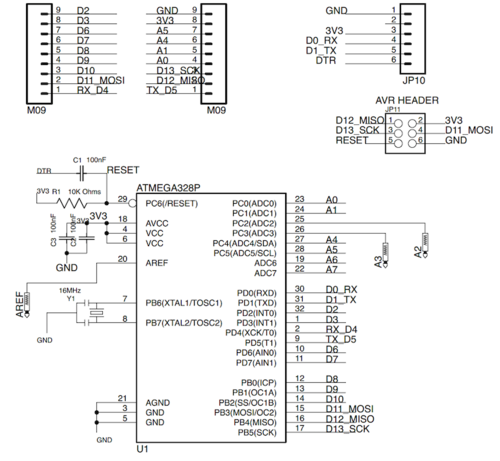Difference between revisions of "328Board"
| Line 41: | Line 41: | ||
A big thanks to Nick Gammon for putting this together: http://www.gammon.com.au/bootloader | A big thanks to Nick Gammon for putting this together: http://www.gammon.com.au/bootloader | ||
| − | |||
The git hub link is here: | The git hub link is here: | ||
https://github.com/nickgammon/arduino_sketches | https://github.com/nickgammon/arduino_sketches | ||
| − | + | Click the Download Zip button, then pull out the Atmega Programmer folder and drop that right into your Sketches folder" | |
| − | |||
Another way to do it: | Another way to do it: | ||
https://github.com/bkibby/OptiLoader | https://github.com/bkibby/OptiLoader | ||
| + | |||
| + | Note - from the board selection, if you're running at 16MHz, then select Arduino Mini, 328 processor. Then you're all set to use the USB-Serial Converter with the 328 board: | ||
| + | |||
| + | [[File:328usbserial.png|500px]] | ||
== Tutorials == | == Tutorials == | ||
Coming soon | Coming soon | ||
Revision as of 10:45, 8 November 2016
...Back to Projects:
Contents
The 328 Board
Introduction
The 328 board is a bare bones breakout board for the ATMEGA328P. Nearly all of the IO has been broken out to standard 0.1" spaced through holes, which also fits nicely into one of the slots of the Platform Board The native AVR programming header and standard 6 pin right angle header to allow for an Arduino Compatible experience.
Schematic
Purchase
Coming soon - given to bare board members October 2016
Parts
It is up to you to order the parts. The list can be downloaded **HERE**. This can be directly uploaded into Digikey if you'd like.
Assembly
Here is what the board looks like when assembled - the only missing components here are the 9 pin headers and the x6 pin AVR programming header
And here's a video showing how I actually hand assembled this board:
Programming
If you want to be able to program the ATMEGA 328 from the Arduino IDE, then you'll need to first load the boot loader. My preferred method is to use Nick Gammon's sketch running on another Arduino:
A big thanks to Nick Gammon for putting this together: http://www.gammon.com.au/bootloader The git hub link is here: https://github.com/nickgammon/arduino_sketches Click the Download Zip button, then pull out the Atmega Programmer folder and drop that right into your Sketches folder" Another way to do it: https://github.com/bkibby/OptiLoader
Note - from the board selection, if you're running at 16MHz, then select Arduino Mini, 328 processor. Then you're all set to use the USB-Serial Converter with the 328 board:
Tutorials
Coming soon



